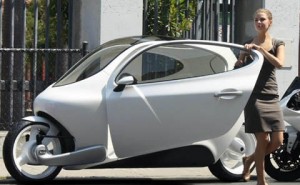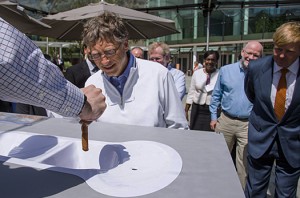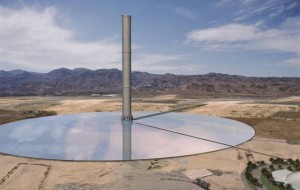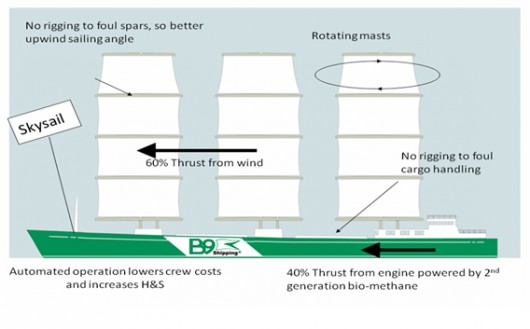1) It’s an egg! It’s a motorcycle! It’s…a car?
From the Smart car to Scion’s iQ and Fiat’s new 500, many companies are trying to figure out what the future of urban, efficient, personal transportation looks like. And nothing looks stranger than the Lit Motors C-1, an electric two-seat runabout with a steering wheel and an egg-shaped, car-like shell.
But it has just two wheels. The trick? Two gyroscopes hidden in the floor, which prevent the micro vehicle from toppling over. It’ll even stay upright if it’s hit from the side. To see this feat in action, check out this video, in which even a supped-up pickup can’t yank a prototype C-1 off balance.
“You’d need a baby elephant to knock over our vehicle,” says Daniel Kim, founder of Lit.
The little pod won’t be a performance slouch, either. Lit claims the production model will top 100 miles an hour, go zero to sixty in under six seconds, and get 200 miles per batter charge. Lit plans to begin sales in 2014, with a starting price of $19,900 after federal tax rebates. You can reserve yours here.

Lit Motors C-1
2) Bill Gates’s favorite toilet
Microsoft founder Bill Gates has strong opinions on toilets. After all, traditional toilets consume truly massive amounts of water and energy. And in developing countries, where many areas lack the plumbing infrastructure required to operate toilets, 1.1 billion people have no access to toilets at all.
To try and find new technologies to solve this problem, the Bill and Melinda Gates Foundation created the Reinvent the Toilet Challenge. With researchers, investors and designers from 29 countries, the foundation awarded the top prize – and $100,000 – to a research team from the California Institute of Technology in Pasadena. The winning toilet is solar-powered, and transforms waste into water, fertilizer and hydrogen. The treated water and fertilizer can be used for crops, and the hydrogen can be stored and converted into electricity.
“Imagine what’s possible if we continue to collaborate, stimulate new investment in this sector, and apply our ingenuity in the years ahead,” Bill Gates said in a statement. “Many of these innovations will not only revolutionize sanitation in the developing world, but also help transform our dependence on traditional flush toilets in wealthy nations.”

3) Gigantic solar updraft tower is coming…to Texas! Maybe!
Texas, longtime home to the biggest land-based and offshore oil drilling industry in the continental United States, may seem a strange place to build a series of revolutionary renewable energy plants. But that’s precisely the plan according to EnviroMission Limited, which announced in December that it will build a series of solar updraft towers across the state.
Each tower would be hundreds of feet high and hollow, but for a series of turbines mounted inside. The base of the tower will be ringed by solar reflectors, causing the hot air inside the tower to rise and causing the turbines to spin.
How big will that tower be? Really, really big.
“The greater the velocity of the Tower, the higher the column of air is and the stronger the updraft,” according to the company’s website. “Therefore, a high-capacity power plant should have the highest Tower possible.”
Why the maybe? Well, despite press releases from EnviroMission saying it has “locked in” a development license, the agreement between EnviroMission and an as-yet-unnamed “Texas-based development entity” isn’t due until the end of 2013. Which means actual construction may be a long way off.

4) Deadly bacteria transformed into sustainable diesel
Where you see a life-threatening parasite, LS9 sees sweet, sweet fuel. In September, the South San Francisco-based company opened a factory in Okeechobee, Florida, that will turn sugar-based E. coli bacteria into biodiesel.
The initial plant is small, with 12 employees and a total output of 75,000 gallons a year. The company hopes to expand from there as it perfects the process.
“This technology has come a long way. It’ll get there, but there will be stumbles along the way,” Stephen Clarke, director of research and development Florida Crystals, told bizjournals.com during the new plant’s grand opening. “We’ve seen, time after time, that such processes are easy to perfect in a laboratory, but scaling up for production introduces new challenges.”
5) Avast! Sails return to cargo ships
Perhaps you thought the days of sailing cargo ships died along with coal-fed locomotives and muzzle-loaded canons. Think again. An Irish company named B9 Shipping announced this year that it is drafting designs for a 3,000-ton cargo ship powered by three giant sails and a biogas engine, making it the first large cargo ship in living memory to operate without fossil fuels.
A small model of the ship was tested in England in July. A full-scale version will cost $45 million and take three years to build. The design would not work for full-scale container ships, which sail faster than 15 knots and need use their deck space for cargo. But on smaller on slower ships, which account for one-fifth of the world’s 50,000 cargo ships, according to the New York Times, use of sails could drastically reduce fuel consumption.

B9 Cargo Ship